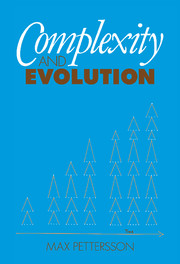Book contents
- Frontmatter
- Contents
- Foreword by Joseph Needham, FRS
- Preface
- Acknowledgements
- 1 Natural and other hierarchies
- 2 Major integrative levels
- 3 Some logarithmic forms of display
- 4 Physical range of integrated natural entities
- 5 Biological range of integrated natural entities (first part)
- 6 Biological range of integrated natural entities (second part)
- 7 Social range of integrated natural entities
- 8 Human societies (first part)
- 9 Human societies (second part)
- 10 Acceleration in evolution
- 11 Further allied accelerations
- 12 Aspects of number
- 13 Aspects of mass
- 14 Positive skewness
- 15 Quantitative conclusions
- Bibliography
- Index
12 - Aspects of number
Published online by Cambridge University Press: 18 January 2010
- Frontmatter
- Contents
- Foreword by Joseph Needham, FRS
- Preface
- Acknowledgements
- 1 Natural and other hierarchies
- 2 Major integrative levels
- 3 Some logarithmic forms of display
- 4 Physical range of integrated natural entities
- 5 Biological range of integrated natural entities (first part)
- 6 Biological range of integrated natural entities (second part)
- 7 Social range of integrated natural entities
- 8 Human societies (first part)
- 9 Human societies (second part)
- 10 Acceleration in evolution
- 11 Further allied accelerations
- 12 Aspects of number
- 13 Aspects of mass
- 14 Positive skewness
- 15 Quantitative conclusions
- Bibliography
- Index
Summary
The main function of this chapter will be to do a basic job of stock-taking. In the small part of the universe best known to us, the solar system, about how many are there of each of the nine main kinds of integrated natural entity? Inspecting the nine answers will suggest several general observations of wide validity.
Frequency estimates
Right from the beginning of an enquiry about the numbers of things, certain points stand out. One is that most of the mass of the solar system, nearly 99.9 per cent, resides in the Sun itself, the atomic composition of which has been reported in some detail. Another point is that the only living systems (or entities from intermediate entity upwards), which are known to occur in the solar system, are on Earth. The surface of the Earth is an extremely small habitat in comparison with the size of the whole solar system, but it is at least a place which we ourselves are able to observe closely. With regard to the photons emitted by the sun, it is proposed to include in the ‘extended solar system’ sufficient photons to bring the total number of fundamental particles up to the round number of 1060. This will be discussed further in another chapter.
Thus we can have a firm value for the total number of fundamental particles in the extended solar system at Level 1. At the other end of the series at Level 9 we have a value of about 180 societies of sovereign states.
Information
- Type
- Chapter
- Information
- Complexity and Evolution , pp. 107 - 115Publisher: Cambridge University PressPrint publication year: 1996
